SFTP Integration
With the SFTP (Secure File Transfer Protocol) integration, you can publish your Paligo content, such as an HTML5 help center, directly to your website.
This protocol implies remote file handling using an SSH (Secure Shell) connection with the remote server, which is more reliable and secure than the traditional FTP (file transfer protocol) integration.
The SFTP integration is available on the Business and Enterprise plans.
 |
Before you connect Paligo to your remote server via SFTP, you have to decide which authentication type to use. Choose between Username and Password or Username with private key.
If you decide to use login with a private key, you have to:
Set up SSH Public Key Authentication. A key pair is created with one private key (identity key) and a public key.
Copy the public key and register it on your SFTP server as trustworthy.
The SFTP server will allow access to anyone with a corresponding private key.
To connect Paligo to your web server via SFTP:
Log in to Paligo via a user account that has administrator permissions.
Sign in to Paligo using a user account that has administrator permissions.
Select the avatar in the top-right corner.

Select Settings from the menu.

Select the Integrations and webhooks tab.

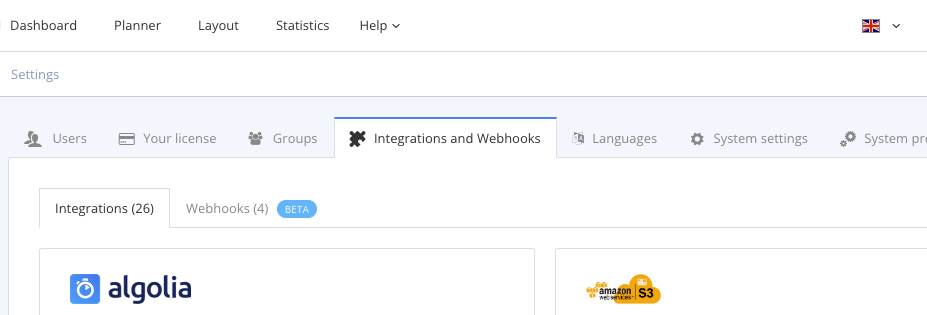
Find the SFTP settings and select Add to display the integration settings.
Note
Add is only available the first time you set up an integration. After that, Add is replaced by Change.
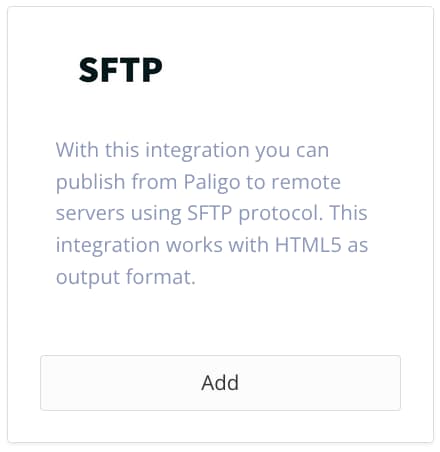
Enter the Host details. This can be the domain URL or the IP address of the domain.
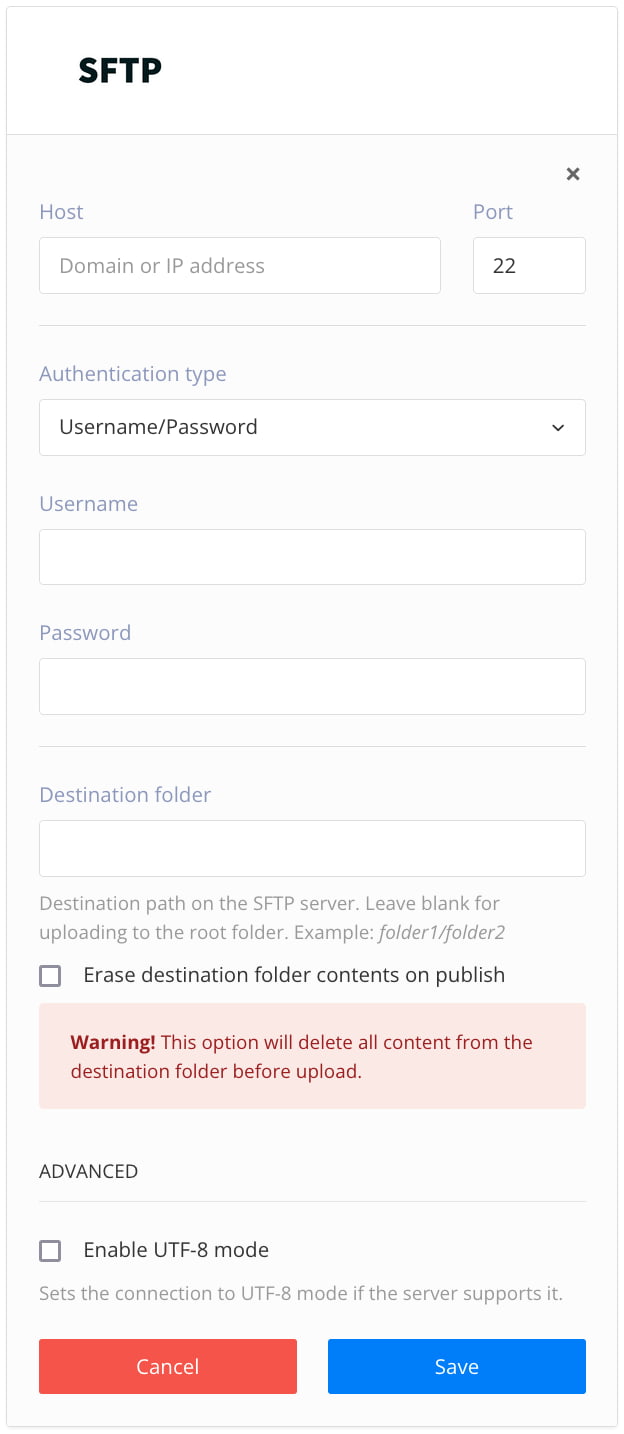
Enter the number of the web server Port that Paligo should attempt to connect to. The default port is 22.
Depending on selected authentication type:
If using Username and Password:
Enter the Username for the user account that will be used to access the domain.
Note
The user account must have read and write access to the folder that will receive the content from Paligo.
Enter the Password for the user account.
If using Authentication key:
Enter the Username that corresponds with the public key.
Select Generate key to generate a public SSH key.
Install this SSH public key on your SFTP server.
As Destination folder, you enter the directory path for the folder that you want Paligo to upload content to.
To upload the zip file directly to the root, leave this field empty.

Use the Erase destination folder contents on publish checkbox to control what happens to any existing content in the destination folder.
Check the box if you want Paligo to delete the existing content before it uploads the new content.
Clear the box if you want Paligo to leave the existing content in place. When Paligo publishes, the destination folder will contain the existing content and the newly uploaded content.
If you have special characters in your filenames, select the checkbox Enable UTF-8 mode.
Important
If you enable UTF-8 mode in Paligo, make sure that it is also enabled on your destination server.
Do not enable this if your server does not support UTF-8.
Select Save.
Select the Change button for the integration.
Select Test Settings to run a connection test.

If the settings are:
Correct, Paligo shows a green success notification.
Incorrect, Paligo shows a red failure notification.
Check each connection setting carefully, to make sure you have not made any mistakes and try again.
If the connection test continues to fail, contact Paligo support for assistance.
You can publish content from Paligo to your web server via SFTP. The process is very similar to "regular" publishing. You create your publication and topics, and set up a layout for the type of output you want, such as PDF, HTML5, etc. Then you choose the publication settings and publish. Paligo generates your content and uploads it to your web server.
Note
Your browser will also download a zip file of the content. You can keep this as a local backup.
To publish to your web server, the SFTP integration settings need to be in place. You also need to have a publication and layout set up to create the output you want, for example, an HTML5 help center. You can then publish from Paligo to your web server:
Select the dotted menu (...) for the topic or publication in the Content Manager.
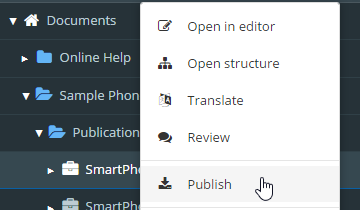
Select Publish.
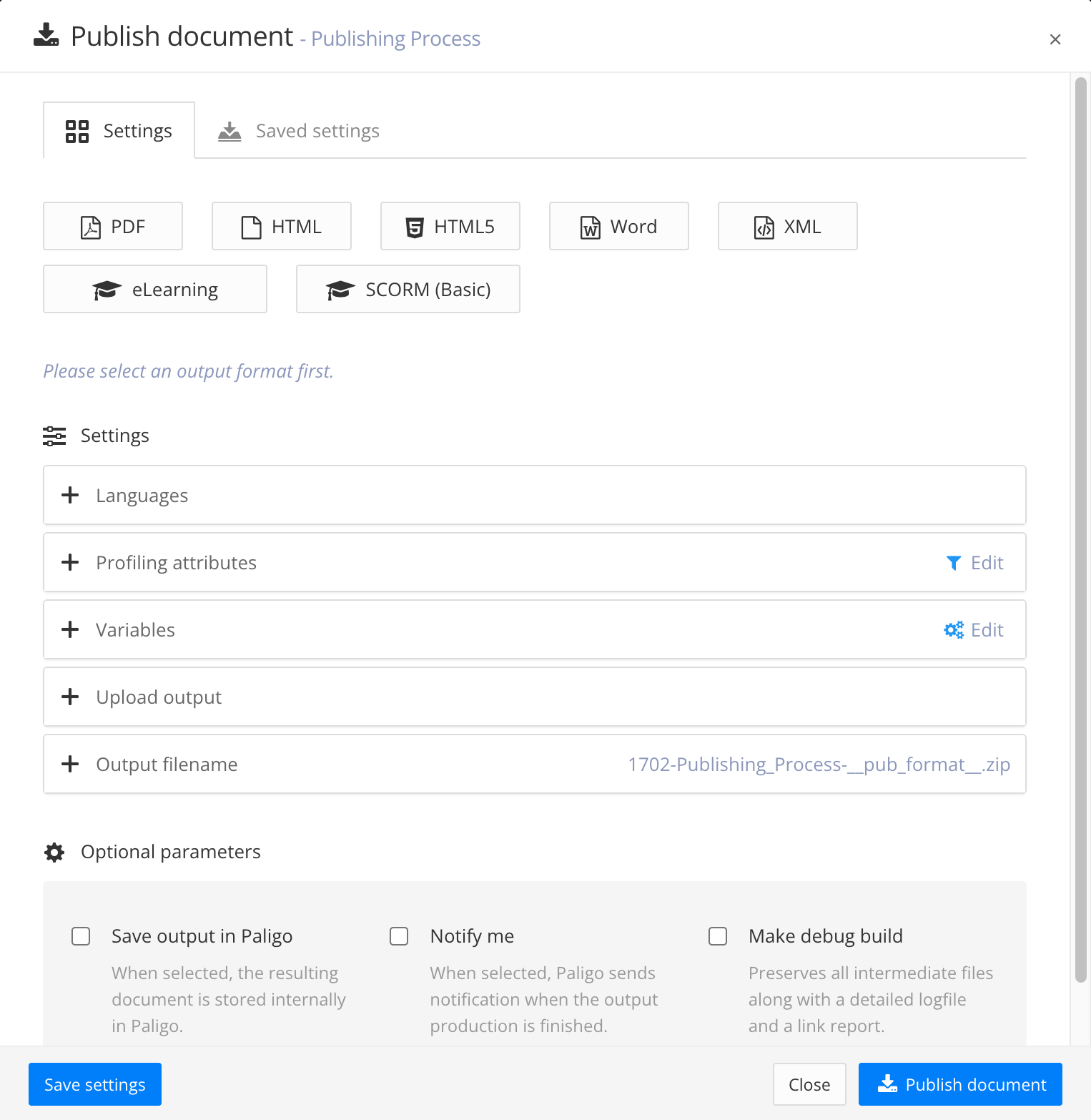
Paligo displays the Publish document dialog.
Select the Type of output you want to publish (for example PDF, HTML, HTML5, Word, XML, eLearning, SCORM, or other).
Select the Layout to be used for your output.
Select the languages to be published.

Note
If no translations are available, only the Source Language will show. If you have multiple languages translated and approved, you can select which ones to include. Paligo will publish each language as a separate output.
For PDF output you can publish them as one multilingual publication, check the Combine selected languages box.
If your content is set up to use Filtering / Profiling, use the Profiling attributes section to apply them. [Optional]. If you do not use filtering, ignore this setting.
Select Edit and then choose the value for each filter that you want Paligo to use. For example, for Audience, choose Expert to include content that is marked as for expert users.
If you do not want to apply a filter, leave the field blank.

Select OK to add your chosen profiling attribute(s).

In the Upload output section, check the Upload via SFTP box.
By default, Paligo will upload the output to the folder that is specified in the Paligo SFTP integration settings.

If required, you can publish to a different folder by selecting the Edit icon next to Upload via SFTP, and then select the folder on the Edit dialog.
The settings you choose will only be used for this individual publish. Any future publishing will revert back to using the folder defined in the integration settings.
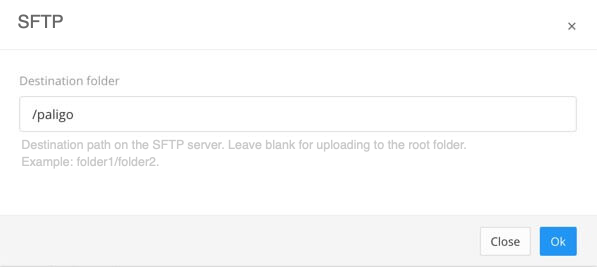
Use the Output filename section to control the filename.
By default, Paligo will use the filename syntax that is defined in the System Settings.

To change the information included in the filename, enter your preferred format in the publishing settings. Default is:
ID-Title-Format.You can use:
ID - The ID of the document.
Title - The title of the publication or topic that you are publishing.
Format - The name of the output format, for example, PDF or HTML5.
Edit date - The date that the publication or topic was last edited.
Branch label - The text from the branch label for the publication or topic. This only applies if your content has been branched and it has a branch label. For details, see Add or Edit Branch Labels.
Unique value - A random string of characters, generated by Paligo, that is added to the filename to make it unique. This can stop the file from being overwritten by later publishes of the same document.
Tip
If you type @ into the field, Paligo displays a list of the available values and you can select from the list. To remove a value, click in it and use the delete key or backspace key to remove all of its characters.
Note
The filename shown in the top-right corner is a preview of the filename that Paligo will use when you publish.
Set the Optional Parameters (leave unchecked if you do not want these features):
Save the output in Paligo - Check the box to save the zip file that Paligo creates when you publish. The zip file will be available from the Resource View and you can download it from the Saved Outputs tab. Clear the box if you don't want Paligo to store the zip file.
Notify me - Check this box if you want Paligo to send you an email when the publication is ready. This is useful if you have very large publications that can take a longer time to process and publish.
Make debug build - Check this box if you want Paligo to include a log file and link report. If there is an issue with your content, Paligo support may ask you to enable this feature so that they can use the log files to investigate.
Select Publish Document.
Paligo starts processing your content and applies your layout and publishing settings. The time that this takes varies depending on how much content you are publishing (the more content, the longer it takes).

A progress bar appears. Select the arrow to hide the progress bar and reopen it by selecting the progress clock in the top menu. To abort the publish, select the X.
The published output appears as:
A ZIP file with the published output appears in the downloads folder on your computer.
If you have altered your browser's settings to store downloaded files somewhere else, the zip file will be found there instead.
If you are using a publishing integration, the zip file will also be sent to the relevant service.
A link in the Activity Feed Panel to download the published content.
Note
To make the content available online, first unzip the file. You can then use the file locally or you can use an FTP client, such as Filezilla, to upload the unzipped content to a web server.
Tip
You can save your publishing settings and reuse them to achieve a smoother publishing process, see Publishing Settings. Any settings you save can also be used for Batch Publishing.
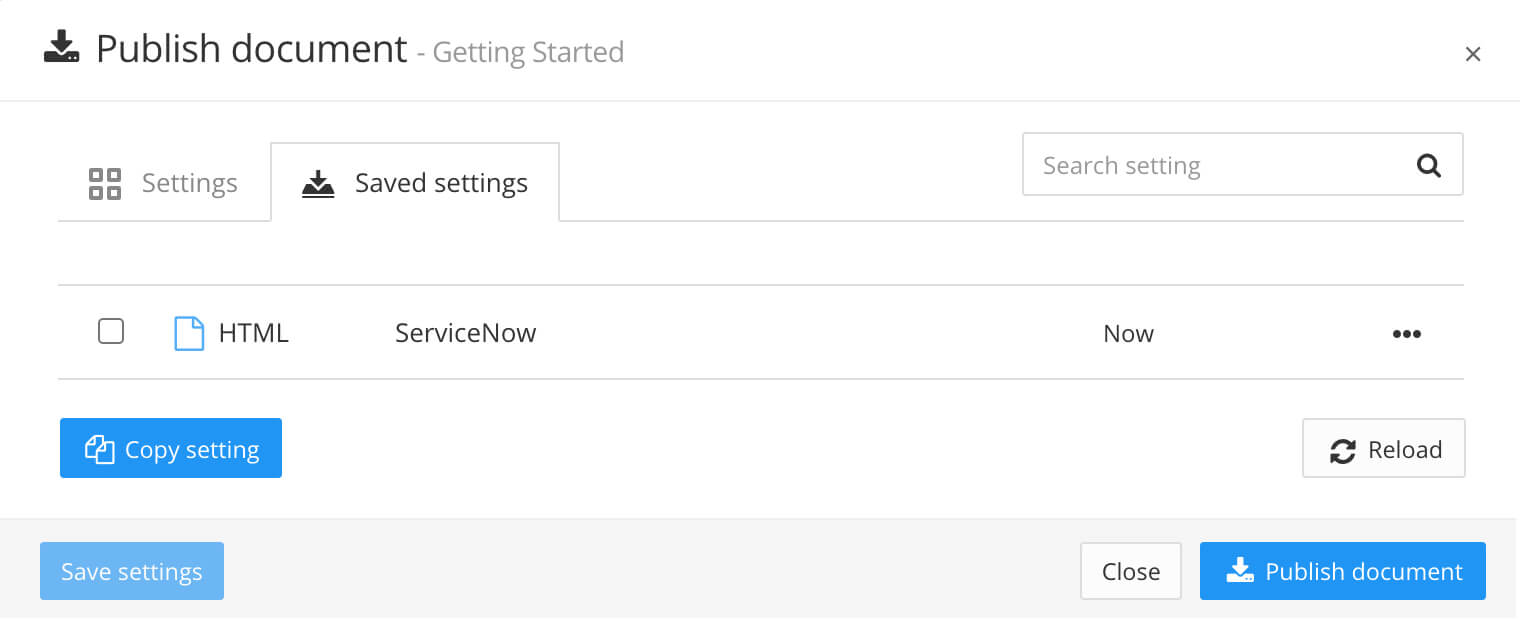
The zip file is also published directly to your website via SFTP, depending on the SFTP settings.

